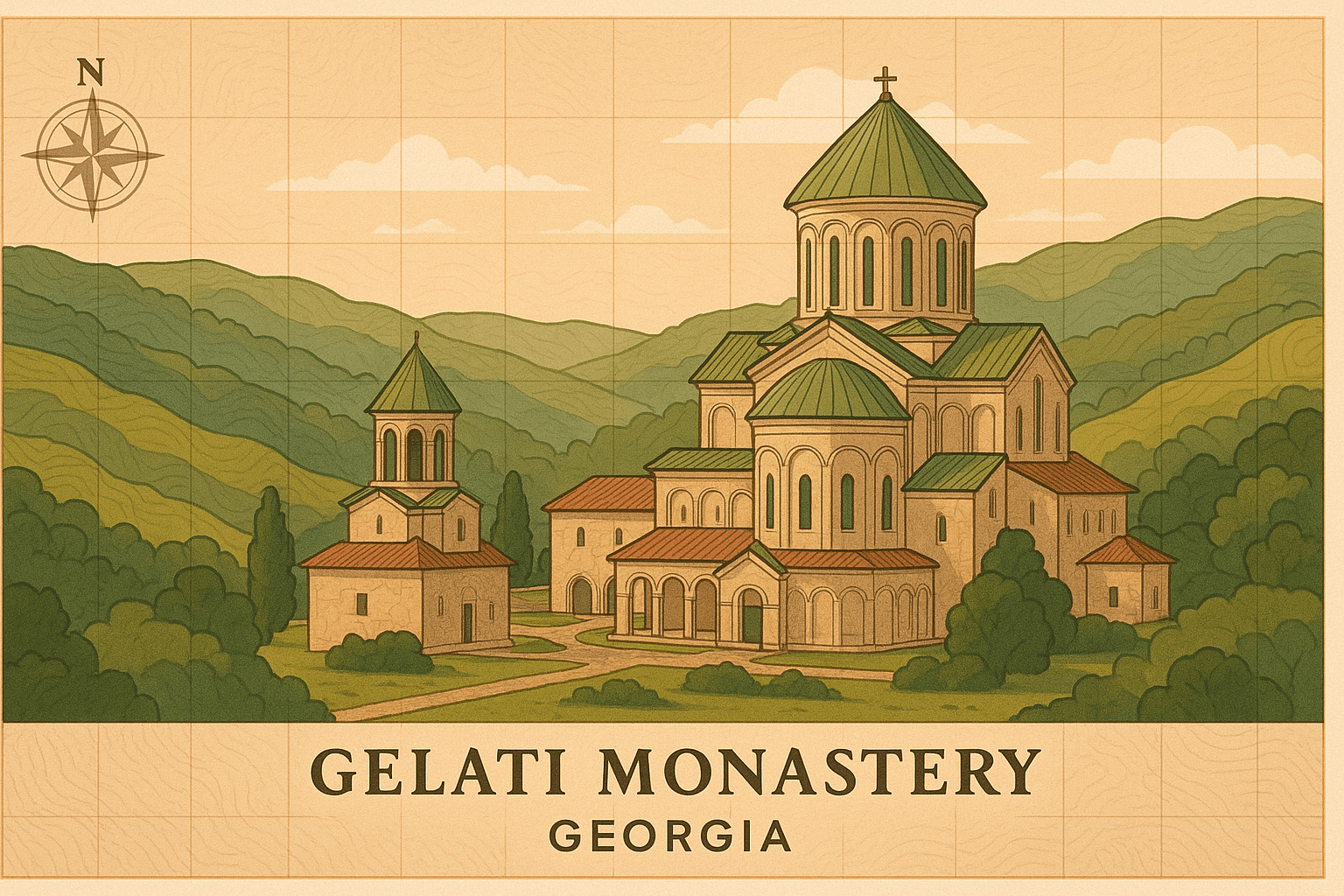A King’s Vision: Forging a Nation and an Academy
The story of the Gelati Academy is inseparable from its founder, King David IV of Georgia (r. 1089–1125), known to posterity as Davit Aghmashenebeli, or David the Builder. When David ascended to the throne, the Kingdom of Georgia was a fractured state, reeling from devastating Seljuk Turk invasions. It was a kingdom in crisis, paying tribute and struggling for survival.
David was a figure of immense energy and strategic genius. He reformed the military, centralized royal authority, and, in a series of brilliant campaigns culminating in the decisive Battle of Didgori in 1121, drove the Seljuks out and unified the nation. But David’s ambitions went far beyond the battlefield. He understood that a strong nation was not built on military might alone; it required a unified cultural, spiritual, and intellectual foundation. He needed an educated class of clergy and administrators loyal to a Georgian state and a Georgian Church.
In 1106, even before his greatest military victories, David founded the Gelati Monastery complex. In his own testament, he envisioned it as a center that would gather “men of virtue, God-fearing, and well-versed in all things divine.” The Academy was an integral part of this grand project from its inception, a place meant to be a “second Jerusalem” for its spiritual devotion and a “New Athens” for its philosophical inquiry.
The “New Athens” on the Edge of Byzantium
The name “New Athens” was a powerful statement. It deliberately invoked the legacy of classical Athens, the cradle of Western philosophy, and signaled Georgia’s ambition to become a world-class center of learning. At the time, the undisputed intellectual heart of the Orthodox world was Constantinople, the capital of the Byzantine Empire. By establishing a rival center, Georgia was making a bold declaration of its cultural sovereignty and maturity.
Gelati’s relationship with Byzantium was complex and symbiotic. The academy actively recruited scholars from the Byzantine Empire, attracting thinkers who brought with them the latest philosophical currents and classical texts. Georgian scholars, in turn, often traveled to Constantinople to study before returning home. This flow of people and ideas created a dynamic intellectual environment at Gelati. It was not merely a provincial copy of Byzantine institutions but a unique synthesis, a place where Byzantine learning was translated, reinterpreted, and integrated into a distinct Georgian cultural context.
The academy’s curriculum was ambitious and modeled on the classical tradition, reflecting its dual identity as a religious and philosophical center. Students at Gelati would have engaged with a wide range of subjects, likely structured around the classical liberal arts:
- Theology: The core of the curriculum, focusing on Orthodox Christian doctrine, scripture, and patristic writings.
- Philosophy: With a strong emphasis on Neoplatonism, which sought to harmonize the philosophical ideas of Plato with Christian theology.
- The Trivium: Grammar, rhetoric, and logic – the foundational arts of language and argument.
- The Quadrivium: Arithmetic, geometry, music, and astronomy – the mathematical and scientific disciplines.
A crucial function of the academy was its role as a translation hub. Scholars at Gelati undertook the monumental task of translating key theological and philosophical works from Greek into Georgian, making a vast body of knowledge accessible to the Georgian-speaking world for the first time.
The Minds of Gelati: Ioane Petritsi and the Neoplatonist Synthesis
While many great minds taught and studied at Gelati, one name stands above the rest: Ioane Petritsi (John Petrici). A Georgian philosopher who had studied in Constantinople under the influential Byzantine thinkers Michael Psellos and John Italos, Petritsi was the intellectual giant of the Gelati Academy. He was a master of both Christian doctrine and classical Greek philosophy.
Petritsi is most famous for his translation of and extensive commentary on Proclus’s Elements of Theology, a foundational text of Neoplatonism. In the Byzantine capital, this kind of deep engagement with “pagan” philosophy was often viewed with suspicion and had even led to the condemnation of Petritsi’s teacher, John Italos. At Gelati, however, under the patronage of a forward-thinking king, Petritsi was given the freedom to pursue this complex synthesis. He argued that philosophy was not an enemy of faith but a tool for understanding the divine order of the universe. His work represents the pinnacle of Gelati’s intellectual project: the fusion of Platonic thought with Christian mysticism, creating a unique and sophisticated school of Georgian philosophical thought.
Another key figure was Arsen of Ikalto, an ecclesiastical scholar and translator who helped David the Builder establish the educational framework for the academies at both Gelati and Ikalto. His translations of major dogmatic and polemical works provided the theological bedrock upon which Gelati was built.
A Golden Age Fades: The Legacy of the Gelati Academy
The Gelati Academy was the intellectual engine of Georgia’s Golden Age, which continued under David’s successors, most notably Queen Tamar the Great. It produced a generation of educated leaders, theologians, and thinkers who strengthened the Georgian state and church. The manuscripts copied and translated within its walls are now priceless treasures, preserving a rich legacy of medieval thought.
The golden age, however, was not to last. The Mongol invasions of the 13th century brought an end to this era of prosperity and stability. While the Gelati Monastery continued to function as an important religious site for centuries (and remains so today), the academy’s period as a preeminent intellectual powerhouse faded. The creative, philosophical ferment that had earned it the title “New Athens” subsided.
Today, the Gelati Monastery complex is a UNESCO World Heritage site, admired for its spectacular mosaics, frescoes, and architecture. But its true significance lies in its invisible history. For a brilliant period, it was a sanctuary of learning and a beacon of culture, a place where, on the edge of a mighty empire, a small kingdom dared to forge its own intellectual destiny.
